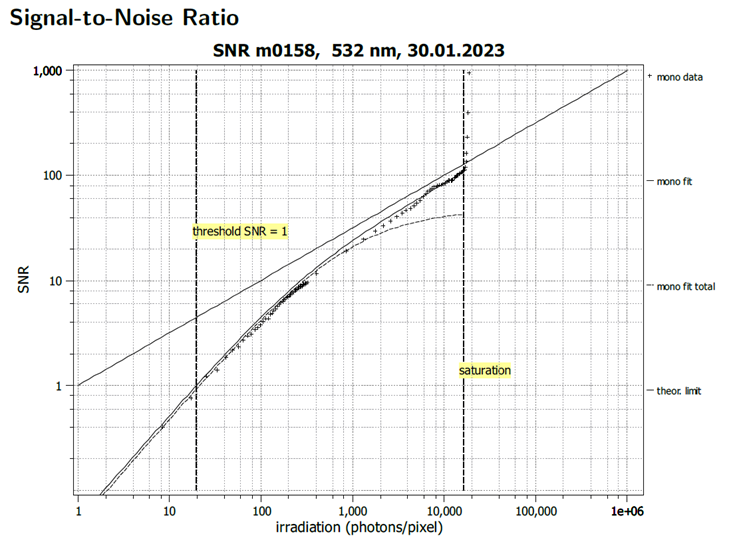|
||||||||||||||||||||||||||||||||||||||||||
|
||||||||||||||||||||||||||||||||||||||||||
Vision Research opt for EMVA1288
Back
to Newsletter
Go to Phantom High Speed Cameras
Phantom Cameras and EMVA1288 | |
Vision Research Inc has recently adopted EMVA1288 to measure and specify the performance of their Phantom high-speed cameras. For too long the high-speed camera industry has published specifications using standards that do not apply well to digital CMOS based sensors. For many years the high-speed camera industry has adopted the old photographic film ISO standard and variations of it. ISO makes it difficult as a distributor or end user to compare digital CMOS high speed cameras from different manufacturers without testing them. It has always required a shootout which is often inconvenient and slow. ISO is a standard that suited film-based imaging, but it is poor at characterising high-speed digital cameras because it misses some of the critical specifications required to truly evaluate high speed cameras. ISO when used with digital CMOS high speed cameras is largely qualitative and inconsistent in its measurement of sensitivity, a critical factor of the performance of a high-speed camera. Often users interested in comparing cameras before purchasing, put them side by side to see which produces a brighter image in order to determine sensitivity. What they can fail to identify is the noise and loss of dynamic range in some cameras from manufacturers that choose to hide noise at the expense of true performance i.e. they create an artificially nice-looking image but compromise other performance parameters in doing so. This practice is not scientifically accurate and leads to false conclusions in analysis and measurement of images. Developed by the EMVA the EMVA1288 standard is a camera standard that characterises digital CMOS camera performance in a scientifically robust way. Standardised equipment is supplied for testing cameras and to generate a consistently comparable report. The standard also defines the test method and so all facets of generating performance specifications is consistent and reliable regardless of the camera and its manufacturer. The EMVA1288 standard treats a camera as a black-box model with light measured as an input and digital number measured as an output with both average and variance values of each being measured. The black box design is simple and sophisticated and models the camera with; By measuring the inputs and outputs of cameras in the EMVA1288 test setup and using the Poisson relationship inherent in the photon shot noise behaviour of light, where the average value is equal to the variance, it is possible to determine the overall Gain factor in the camera. From there it is a matter of mathematics to accurately determine the other parameters that clearly and scientifically characterise a camera. | |
| |
Understanding the key EMVA 1288 parameters: Quantum Efficiency Temporal Dark Noise SNR Signal to Noise Ratio | |
 | |
Absolute Sensitivity Threshold Saturation Capacity Dynamic Range Vision Research is the first of the high-speed camera manufacturers to measure and publish the EMVA1288 specifications for their cameras, which demonstrates their willingness to be transparent and to give users the true ability to compare their Phantom cameras to other brands. It is now up to distributors and end users who need to choose between high-speed cameras, to pressure their prospective suppliers to measure and provide EMVA1288 specifications for their products. In this way cameras can be compared without costly and slow shootouts, where the truth can be obfuscated with misinformation and tricks. We at Adept Turnkey encourage you to contact your prospective high speed camera supplier and insist on EMVA1288 specifications that truly measure the performance of their cameras. EMVA1288 is heavily reliant on scientific and mathematical methods and is not necessarily easy to understand or to visualise their effect on your images and analysis results. Engineers at Adept Turnkey have studied and understand the standard. Please contact us if you have any questions about EMVA1288. Our engineers will be happy to help you to more clearly understand what they can do for you. | |
| Need
a price or more information? Please
email Adept Turnkey or call our offices Adept Turnkey Pty Ltd are Machine Vision and Imaging Specialists. To find out more about Phantom High-Speed, please contact us or call us at Perth (08) 9242 5411 / Sydney (02) 9979 2599 / Melbourne (03) 9384 1775. |
|
If you like this page, please recommend and share it. |
|||
| More | |||




